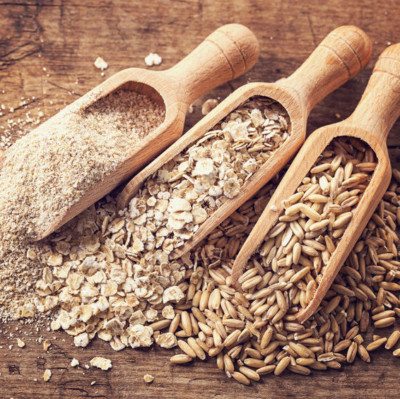
Hammer Milling
What is Hammer Milling?
Hammer milling, utilized for size reduction, is favored for its high productivity and flexibility in grinding a wide range of products. In the cereal processing industry, hammer milling is used to transform whole kernels into flours.
Unlike roller milling, which makes use of compression and shear forces, hammer mills use high speed rotors, which allow the particle comminution process to be carried out quickly and with slight temperature increase since impact forces are used for breaking up particles (similar to pin milling).
Origin
Hammer mills were originally designed for the comminution of non-food materials. Their advent was key for carbon and rock reduction intended for the fuel and construction industry. Hammer mills offer great flexibility in terms of variety of materials that can be ground, and simplicity of installation and design.
Hammer mills were adapted to process foods such as cereals, legumes, and animal feedstuff. Such adaptation demanded the change of construction materials and compliance with hygiene and food safety regulations.
How does hammer milling work?
A hammer mill is a single-passage-type mill that has sets of hammers (generally rectangular pieces of hardened steel) spaced equally and attached to a rotating shaft that rotates at high speed using a powerful electric motor inside a grinding chamber. The leading face of the hammers may be blunt or sharp to create different impact or shearing profiles. Typically, rotor speeds of 3,000–7,200 rpm are used with flat hammers for fine grinding, and speeds of 1,000–3,000 rpm are used with sharp-bladed hammers for coarse grinding.1
The solid material is fed by gravity into the milling chamber and is crushed or shattered by repeated hammer impacts, collisions with the walls of the chamber, as well as particle–particle impacts.1
The hammer-rotor assembly is enclosed within a interchangeable, perforated and cylindrical screen of selected mesh, which retains the coarse material for further grinding while allowing adequately sized material to pass through as finished products at the discharge end.2
The final particle size of the ground product is a function of the following variables:
- Rotation speed of motor
- Flow rate of incoming material (load)
- Design and arrangement of hammer breakers
- Screen size or mesh
- Hardness or resistance to breakage of materials being milled
- Target granulation or fineness of milled product (initial particle size/final particle size ratio)
- Energy consumption in KWh/ton, or electric current consumed by motor
Application
Hammer mills have three major disadvantages when compared to roller millers:
- Limitations to produce uniform particle sizes
- Increased noise levels
- Increased power consumption.
Given its high intensity and high impact energy, hammer mills cause excessive damage to starch granules of endosperm, and loss of moisture. This clearly limits their use in the production of high-quality refined flours intended for the baking industry. Hammer mills also consume a lot of electric energy, generate excessive dust, and are considered a hazardous operation. In most flour mills, they are used only for grinding screenings and bran.3
Hammer milling is used for:
- Producing dry masa flour for the production of tortillas and corn snacks.
- Producing oat bran and oat flours. In recent years, a market for oat bran has developed thanks to of its high soluble fiber content.5
- Producing feed and processing animal food. Hammer mills are the norm in this industry. Milling units can have diameters as large as 19 meters (about 750 inches), screen areas as large as 4,5 m2 (7,000 in2), and operating speeds up to 3600 rpm. Such millers require motors up to 600 horsepower.6
References
- Da Costa, S.B. “Dry Milling.” Engineering Aspects of Cereal and Cereal-Based Products, Taylor & Francis Group, LLC, 2014, pp. 104–105.
- Posner, E.S. “The Grinding Process.” Wheat Flour Milling, 2nd ed., AACC International, Inc., 2010, pp. 185–193.
- Posner, E.S. “Mill Design.” Wheat Flour Milling, 2nd ed., AACC International, Inc., 2010, p. 286.
- Rosentrater, K.A., and Evers, A.D. “Other Food Products.” Kent’s Technology of Cereals: An Introduction for Students of Food Science and Agriculture, 5th edition, Elsevier Ltd., 2018, p. 714.
- Rosentrater, K.A., and Evers, A.D. “Dry Milling Technology.” Kent’s Technology of Cereals: An Introduction for Students of Food Science and Agriculture, 5th edition, Elsevier Ltd., 2018, p. 449.
- Rosentrater, K.A., and Evers, A.D. “Feed and Industrial Uses for
Cereals.” Kent’s Technology of Cereals: An Introduction for Students of Food Science and Agriculture, 5th edition, Elsevier Ltd., 2018, p. 801.

